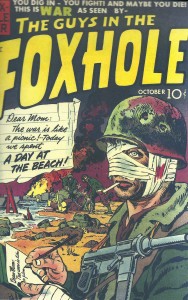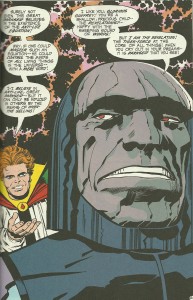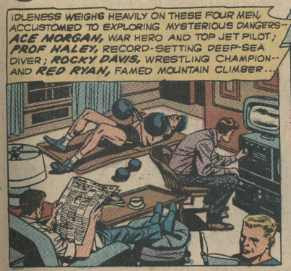Jack Kirby Was the 20th Century & other notes
by Jeet Heer
Saturday, March 6, 2010
Read Comments (10)
More gleanings from my notebook:
Herriman’s Missing Signature. Michael Tisserand has a question: “Does anyone know (or have any ideas why) George Herriman generally no longer signed neither his daily nor his Sunday comics in their final years? How uncommon is this? Are there any reasons having to do with comics production, or is this a purely personal decision? I also noticed that there were periods of time in Herriman’s early stint at the Los Angeles Examiner where he didn’t sign his comics. These are the only comics in those issues that are unsigned.” Any thoughts on this would be appreciated.
Jack Kirby Was the 20th Century. Jack Kirby was the immigrant crowded into the tenements of New York (“Street Code”). He was the tough ghetto kid whose street-fighting days prepared him to be a warrior (the Boy Commandos). He was the patriotic fervour that won the war against Nazism (Captain America). He was the returning veteran who sought peace in the comforts of domestic life (Young Romance). He was the more than slightly demented panic about internal communist subversion (Fighting American). He was the Space Race and the promise of science (Sky Masters, Reed Richards). He was the smart housewife trapped in the feminine mystique, forced to take a subservient gender role (the Invisible Girl). He was the fear of radiation and fallout (the Incredible Hulk). He was the civil rights movement and the liberation of the Third World (the Black Panther). He was the existential loner outcast from society who sought solace by riding the waves (the Silver Surfer). He was the military industrial complex (Nick Fury). He was the hippies who rejected the Cold War consensus, and wanted to create their own counterculture (the Forever People). He was the artist who tried to escape his degrading background (Mister Miracle). He was feminism (Big Barda). He was Nixon and the religious right (Darkseid and Glorious Godfrey). He was the old soldier grown weary from a lifetime of struggle (Captain Victory). There was hardly any significant development in American 20th century history that didn’t somehow get refracted through Kirby’s whacko sensibility. Jack Kirby was the 20th century.
(more…)





















